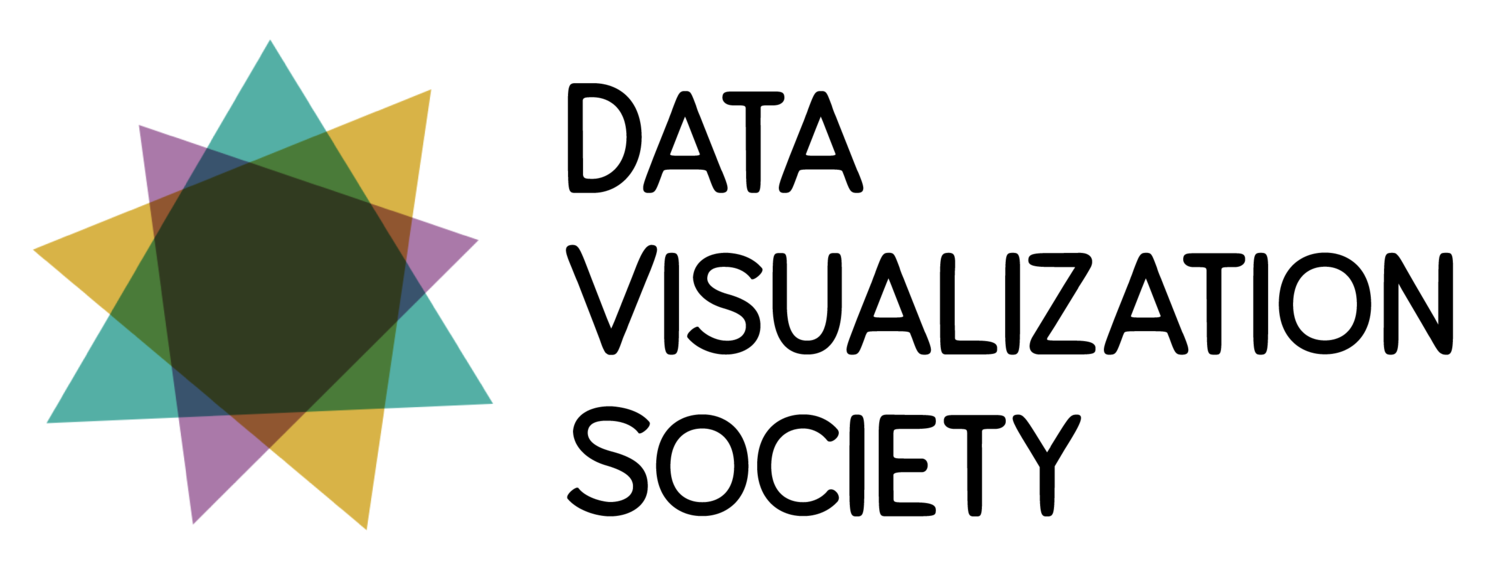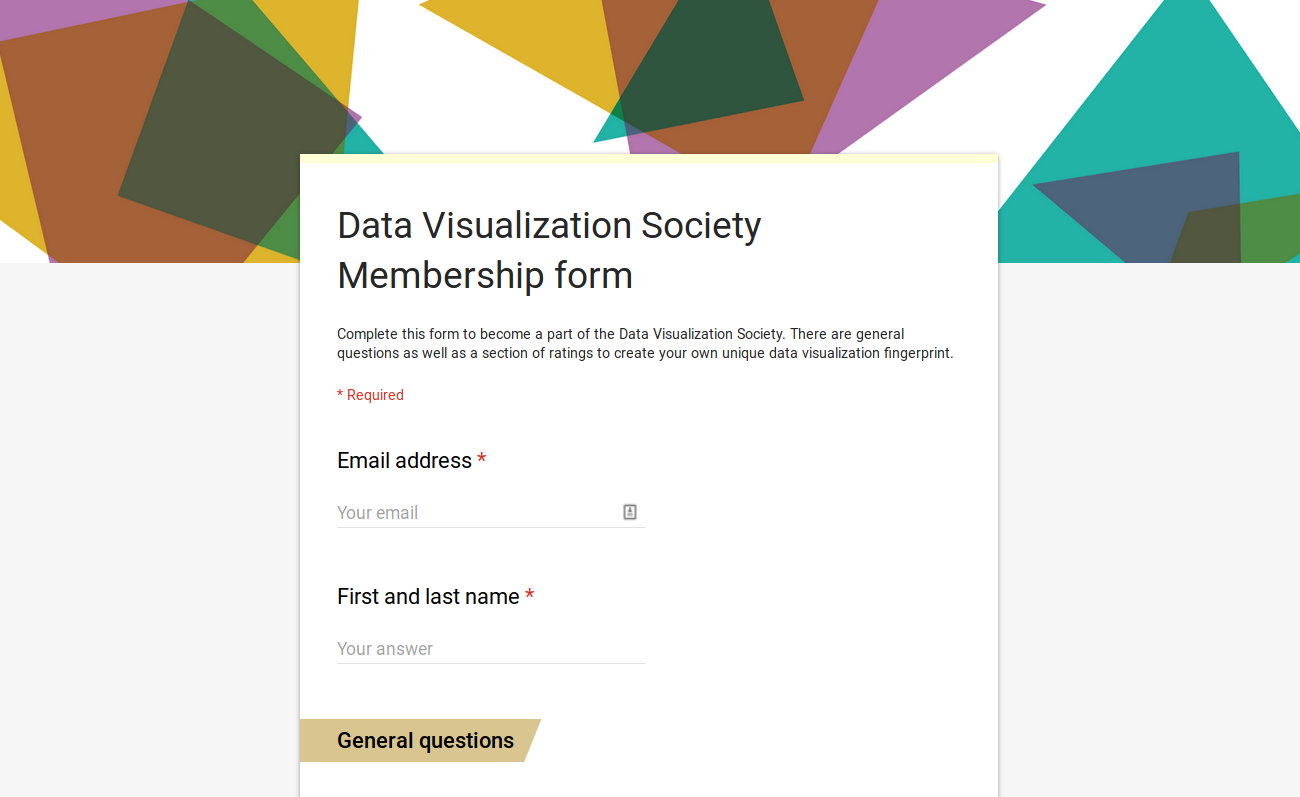Not My Society
A few weeks ago we saw the foundation of a new group called the Data Visualization Society. Since its launch some 4,000 “members” have joined. There’s a Slack channel for discussion, a Medium publication and a collection of links to useful resources.

It’s main goal is described as supporting its member in developing their data visualization skills:
The Data Visualization Society aims to collect and establish best practices and foster community to support its members as they develop their data visualization skills.
In general I support the idea of a community of visualization professionals getting together to share their knowledge and engage in critical discussions about the field, and to make this clear: I wish the DVS (as I am going to abreviate the group for the rest of this text) and its members all the best in achieving their goals.
However, I do have some issues in how the DVS has decided to build this community, and I want to share my thoughts in this blog post.
1. Talk to the community before launching your community project
If there is one thing I know about community building it is that reaching out and talking to people is perhaps the most essential part. Like many people from the field I was taken by surprise when I learned about the launch of a new group that seemingly aimed to represent data visualization.
If the DVS tries to be something like the new home for the datavis community, it certainly would have been nice to ask the community just how this home should look like ^[I’ve heard multiple people complaining about the logo typeface already ;-)], how it should be called, what its mission should or could be, etc.
While this kind of “building in secret” probably helps to maximize the launch impact, it leaves me wondering why so many people who are already working in the same area where not given a chance to get involved earlier in the process. There could’ve been 15 founding members instead of just three.
2. Put yourself behind the community, not in front of it
When I first learned about the DVS I checked out the website and was a little bit put off by the team page that lists the three “founding members”, complete with professional photos and short biographies.
This might be just a matter of taste, but I couldn’t help but thinking that this page is more about establishing leadership than it is about welcoming people. Working in the startup myself — where the differentiation between “founders” and “non-founders” is usually about ownership and company control — this team page probably triggered the wrong impulses with me.
Or to stick with that community home metaphor: if you are trying to build a house where everyone feels welcome, you should perhaps resist the temptation of putting your statues out on the front lawn, no matter how proud you are of what you achieved. Communicating that this is about the community and not about you.
3. Keep the door open and the blinds up
Now that the house has been built it would be nice to see what’s going on inside, who’s already there, what’s being discussed, what the atmosphere is like etc. People in the community might wonder whether this is is a place for them or not. So it seems like a good idea to leave the front door wide open and pull up the windows blinds.
But the DVS decided to do the opposite. The main forum is a Slack channel and there’s no way of looking inside before you commit to “join” the society. And “joining a society” certainly is a bigger commitment than for instance signing up for a newsletter or logging in with your Twitter account.
And in case with the DVS, it involves answering a rather awkward questionnaire about your self-described visualization skills, and a note about potential membership fees in the future.

4. Give before you take
Community engagement should be mostly about giving instead of taking. So many people in this field have dedicated years (or even decades) of their lives to the data visualization community. They’ve written blog posts, published tutorials, made podcasts, and most of them have never asked for anything in return.
Again, with the DVS for things look a little different. Other than a Slack channel I still don’t really know just how they are planning to help people improve their visualization skills. The only thing they made clear from the start is that at some point there’s going to be a membership fee (once they figured out “how to provide value”). And indeed, just weeks after launch they started a Patreon campaign.
For instance, the first $1000 per month (which they already reached) are dedicated to covering “recurring expenses” like “website hosting, domain name, email” and “website design”. At the same time hundreds of people in the field, including myself, have designed and hosted many, many websites for the data visualization community without ever asking for money^[I am on the internet long enough to know that a .COM domain costs $7.99 a year and website hosting is basically free, so I did wonder what exactly these $1000 dollars a month are going to be spent on].
The society I’d like to join
To end this post on a more positive note, here’s a description of a society I’d like to join:
- It’s an open society that everyone can be a part of (official “members” and non-members)
- It’s an egalitarian society that makes no distinction between “founders” and members who joined at a later point.
- It’s a free society in which there are no membership fees, and any contributions from its members are voluntary
- It’s an integrative society that is not trying to replace communities and organizations that already exist but tries to integrate them.
Fortunately there is already an absolutely fantastic community around data visualization! There are lots of interesting discussions on Twitter and the Fediverse, there are great many Slack channels for people to meet, there are many blog authors who write about data visualization topics (and engage in reader discouse in their comment sections), there are thousands of tutorials and free code examples that help practitioners to get started, there are free and open source visualization libraries.
There are also great datavis podcasts like Data Stories and PolicyViz which regularly invite people from the vis field to discuss interesting topics, there are data vis newsletters, there’s an amazing number of great data visualization books, and now there’s even a book club where you can meet the authors of these books.
There are over 13 million people in the r/dataisbeautiful Reddit subchannel (which is also organizing monthly visualization challenges btw), there are thousands of datavis and mapping meetups around the world where people get together, there are datavis awards, and there are datavis conferences that give people in the field a chance to speak (and record their talks and make them available for free to the many people who couldn’t afford conference tickets).
Isn’t all that amazing? I am really curious to see how and where the Data Visualization Society is going to fit into this field, and what additional “value” it is going to provide.
Finally, I’d like to ask you not to mistake the critical thoughts I offered here for bitterness or malevolence. I am happy to see the DVS get this much support, and I’ve read really good things about the discussions in the Slack channel, and I genuinely wish this project all the best for future! 👋